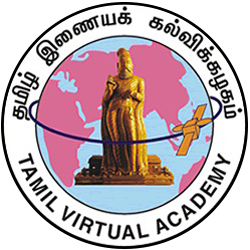Primary tabs
- A02112 திணை, பால், எண், இடம்
Dealing with the four aspects of status, gender, number and place this lesson focuses on classification of nouns according to these four.
The status (திணை) refers to human or non-human called உயர்திணை and அஃறிணை. Gender (பால்) is classified as masculine (ஆண் பால்), feminine (பெண் பால்) and neuter (நடு) Number (எண்) is either singular (ஒருமை or plural (பன்மை). Place (இடம்) refers to the person in English pronouns. namely I person (தன்மை), II person (முன்னிலை) and III person (படர்க்கை)
In Tamil there are some nouns common to human and non-human beings. Kinship terms like father and mother and all three pronoun persons are common to both statuses (திணைகள்).
Gender as applied to human beings is two. namely masculine and feminine. But the number is again applied to the gender.
Then the human status yields three resultant uses ஆண்பால், பெண்பால், and பலர் பால். The non-human status becomes ஒன்றன்பால் and பலவின்பால்.
பலர்பால் is also used as a honorific term when referred to elders. Similarly certain nouns are common to both the human genders, as in ஊமை(dumb) and கவிஞர் (poet).
Nouns such as பறவை, மரம், and பனை all genderless non human words. But they take the plural suffix of ‘கள்’ as in பறவைகள்.
I person refers to the speaker or writer, II person to the person in the front being addressed and III person to all others not noted in I and II person.


